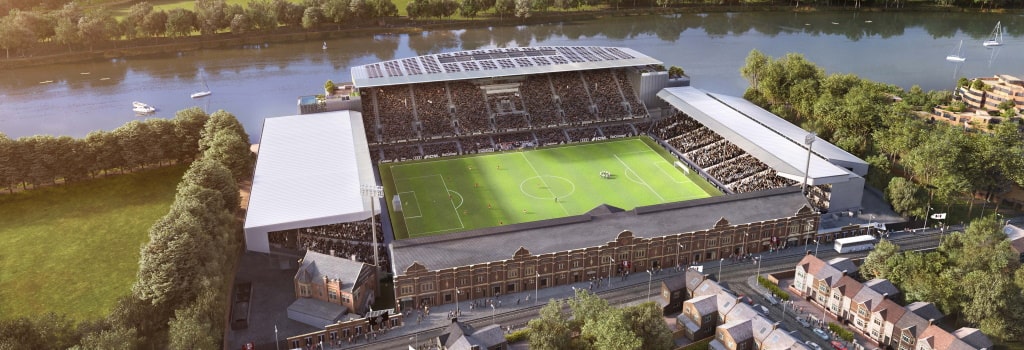

The English Premier League is the most popular domestic competition in world football and viewing figures back up that claim. The EPL is watched by many millions of viewers across the season, and the numbers continue to grow.
Many global fans will also travel to watch a game in person, and that helps to increase the revenue of all Premier League clubs. At the same time, it also means that many teams have had to upgrade their stadiums in order to accommodate a bigger audience. Some have even switched to new grounds within the surrounding area.
Among the current Premier League teams to have moved in the last few seasons are Manchester City. The club has dominated the division in recent campaigns, and regular Premier League odds place City at the top of the betting markets.
The club's move from Maine Road to The Etihad has helped to boost attendance, and the additional income has seen the biggest stars in the game move to Manchester City.
North London rivals Spurs and Arsenal have also moved stadiums, while former EPL clubs such as Leicester City and Southampton have upgraded their facilities too. Everton will be next, with the club preparing to switch to their new ground at Bramley Moore Dock ahead of the 2024/25 season.
For many reasons, it's not always possible for a club to move to a new ground. However, with growing interest in the Premier League, all teams need to consider capacities and where they need to improve their infrastructure.
One ground that will be upgraded in the near future is Craven Cottage. It's been home to Fulham FC since 1896 and has already received a number of renovations in the Premier League era. Moving forward, Craven Cottage will benefit from the club's new Riverside Stand.
The Riverside Stand is expected to be in place at the start of the 2024/25 campaign. It will increase the stadium's capacity from 25,000 to 28,000 while introducing a host of new features that will benefit Fulham fans.
The new stand will house a choice of restaurants, bars, and conference rooms, together with a hotel and health club. The new facility at Craven Cottage should meet the desire for many Premier League clubs to gain extra income away from match days.
Across Stanley Park from Everton's current ground, Liverpool also had the option to move stadiums. There had been discussions in place for a switch, but the club decided to remain at their iconic Anfield location.
This was a huge relief for many fans. Anfield was synonymous with the club, and very few wanted Liverpool to adopt a new facility. Instead, the existing structure is being upgraded to accommodate more spectators in the seasons that lie ahead.
The initial phases are already complete, and the capacity of the ground has been increased to 54,000. Phase two will see the introduction of new seats at the Anfield Road end, with the capacity building up to a maximum of 61,000.
For Liverpool, the focus has been on developing the ground in order to allow more spectators to attend. That aim is almost complete, and Anfield will now be able to compete with other Premier League grounds in terms of that capacity.
Even the biggest clubs in world football have room for some additional expansion. Manchester City moved to their current Etihad Stadium from their former home of Maine Road in 2003, but increased interest in the game means that the multiple Premier League champions are growing their current capacity.
Work to expand the upper tier of the North Stand is expected to begin in November 2023, and the development is intended to build the existing capacity to over 60,000. The development will also include a Sky Walk and a rooftop bar.
Other clubs looking to alter their existing grounds in the near future include Aston Villa and Premier League new boys Luton Town. Luton's capacity of 10,356 is the lowest in EPL history, and they will look to increase those levels at their Kenilworth Road Stadium.
The ultimate goal for Luton is to move to a new ground in the area in 2025, which will be able to hold over 23,000 spectators.
Football fans are aware that times are moving fast, and the interest in Premier League clubs continues to increase on a global scale. Those clubs need to move quickly, too, in order to keep up with that increased demand.
Clubs can continue to increase their capacities, but there will be an overall limit to what they can achieve. In the future, virtual reality technology could help to answer increased demand.
There is exciting potential with VR, but, in the meantime, we can expect to see further ground extensions in the Premier League in the coming months.
Taking my son to his first football match was one of the best experiences I've had as a father so far. I've written this article for Alex to read when he gets older.
My daughter's first ever football match - Orlando City v Atlanta United, August 2019. Written for Izzy to read when she gets old enough. Vamos Orlando
23 interesting things to do to pass the time until the football season restarts
The 91 biggest football stadiums in Europe. From Manchester to Munich, Villa Park to Valencia - each one with a capacity over 40,000
